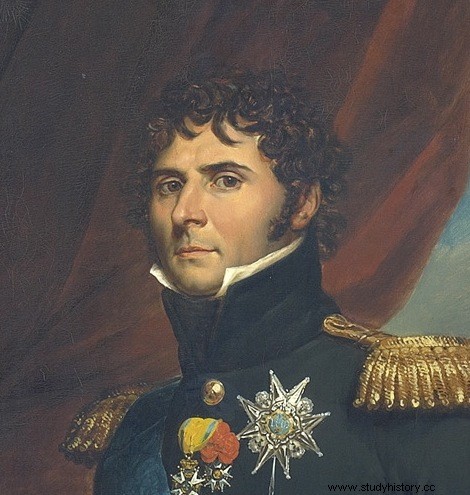It is what the rebelliousness of youth has and even more so if the French Revolution catches you being of humble origin.
The French Jean-Baptiste Bernadotte he was a convinced revolutionary whose military qualities led to rapid rise in the midst of the French Revolution. In 1804 Napoleon appointed him Marshal of France but, even so, his relationship with the emperor was far from idyllic, going from recognition to confrontation.

Charles XIV
On the other hand, in Sweden, we have the king, Charles XIII, sick and without an heir to the throne due to the premature death of the prince, and a Jean Baptiste Bernadotte with a reputation as a good and upright man after the treatment of a group of 30 Swedish officers captives in Lübeck. The surprise would come in 1810 when Otto Mörner , sent by the king of Sweden to announce the death of the crown prince, decides to offer Bernadotte the succession to the throne at his own risk. At first, Napoleon laughed it off but when he thought about it carefully he realized that «he was killing two birds with one stone «:a protesting military officer is removed and Sweden becomes an ally with a puppet king… he decides to support his candidacy.
When Mörner returns to Sweden he is arrested for insubordination but Bernadotte's candidacy is gaining support, people see in him an honest military man and that he can lead them to recover Finland in the hands of Russia since 1809. In 1810 he was named crown prince. Napoleon was wrong… the king left all power in his hands and Bernadotte joined the Sixth Coalition to fight against Napoleon, he also incorporated Norway into the Swedish crown in 1813.
In 1818, after the death of Charles XIII, he was crowned king of Sweden and Norway as Charles XIV John .
Going back to the origin of the post and his revolutionary youth, Bernadotte had a tattoo that said «Mort Aux rois » (death to kings). The curious thing is that, in addition to being king, Bernadotte started a dynasty that has survived to this day .
Sources:RTVE, La France en Suede, Napoleon Guide
